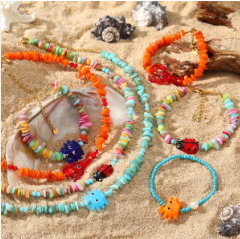Maintaining Diamond or Gemstone Settings in Stone Bracelets
Stone bracelets adorned with diamonds, sapphires, or other gemstones require specialized care to preserve their brilliance and structural integrity. Over time, settings can loosen, prongs may wear down, and embedded stones can accumulate dirt or oils, diminishing their luster. Below are detailed strategies to protect and maintain the embedded elements of your bracelet, ensuring longevity and aesthetic appeal.
Regular Inspection for Loose or Damaged Settings
Early detection of setting issues prevents stone loss and further damage. Follow these steps to monitor your bracelet’s condition:
- Visual Examination: Use a magnifying glass or jeweler’s loupe to inspect prongs, bezels, or channels for cracks, bends, or gaps. Check for stones that appear raised or wobbly, indicating a loose fit.
- Gentle Tapping Test: Lightly tap the bracelet near the settings (avoid hitting stones directly) and listen for rattling sounds, which may signal loose stones. Handle the bracelet delicately to avoid dislodging gems during testing.
- Professional Evaluation: Schedule annual inspections with a qualified jeweler, especially if the bracelet is worn daily. A professional can tighten loose prongs, realign settings, or replace worn components before issues escalate.
Cleaning Techniques for Embedded Gemstones
Proper cleaning removes debris that dulls gemstones and weakens adhesives. Use these methods to restore shine without causing damage:
- Mild Soap and Warm Water: Soak the bracelet in lukewarm water mixed with a few drops of gentle dish soap for 10–15 minutes. Use a soft-bristled toothbrush to clean around settings, focusing on crevices where dirt accumulates.
- Avoid Harsh Chemicals: Steer clear of bleach, ammonia, or ultrasonic cleaners, as these can erode metal settings or loosen adhesives. For pearls or opals embedded in stone bracelets, opt for dry cleaning methods to prevent water damage.
- Drying and Polishing: Rinse the bracelet thoroughly under running water and pat dry with a lint-free cloth. Polish gemstones with a microfiber cloth to enhance shine, being cautious not to snag prongs or edges.
Protecting Settings During Wear and Storage
Preventative measures reduce the risk of physical damage to settings and embedded stones. Adopt these habits to safeguard your bracelet:
- Remove During High-Impact Activities: Take off the bracelet before sports, gardening, or household chores to avoid collisions that could bend prongs or chip stones. Store it in a padded pouch or lined jewelry box to prevent scratching.
- Avoid Exposure to Extreme Temperatures: Sudden temperature changes (e.g., entering a sauna or leaving the bracelet in a hot car) can cause metal to expand or contract, loosening settings. Store the bracelet in a climate-controlled environment.
- Limit Contact with Hard Surfaces: Be mindful of knocks against countertops, door frames, or other objects. Even minor impacts can weaken prongs or fracture stones over time.
Addressing Wear and Tear in Metal Settings
Metal components, such as prongs or bezels, may degrade due to friction or corrosion. Use these strategies to maintain their strength:
- Re-tipping Prongs: If prongs become thin or worn, a jeweler can reshape and reinforce them with additional metal. This prevents stones from shifting or falling out.
- Rhodium Plating for White Metal: For bracelets with white gold or silver settings, periodic rhodium plating restores shine and protects against tarnish. However, avoid plating over gemstones to prevent coating buildup.
- Channel and Bezel Maintenance: Check channel settings for loose stones or gaps in the metal. Bezels may require tightening or reshaping to ensure a secure fit. Consult a jeweler for repairs to intricate designs.
By incorporating regular inspections, gentle cleaning, and proactive protection, you can preserve the embedded elements of your stone bracelet for years to come. Whether adorned with diamonds, emeralds, or other gems, these maintenance practices ensure your piece remains both stunning and secure.







